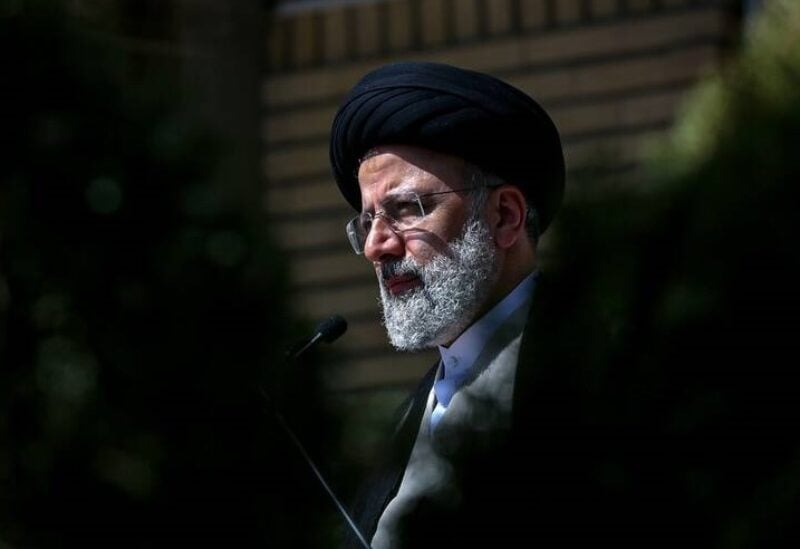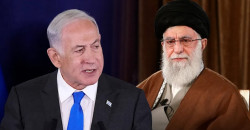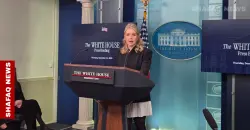Iran after Raisi: political landscape and future outlook

Shafaq News/ After the tragic crash of the Iranian President Ibrahim Raisi's helicopter in East Azerbaijan province, a deeper political narrative unfolds.
Raisi, regarded as a stalwart figure within the Iranian regime since the post-1979 revolution, had been poised for a monumental trajectory, culminating in his ascent to the presidency in 2021.
Yet, the gravity of Raisi's passing extends beyond the aviation accident. Forecasts from Western and Iranian quarters had envisioned his potential elevation to the esteemed role of Supreme Leader of the Islamic Republic, succeeding the ailing Ayatollah Ali Khamenei, whose health had recently been a concern.
The abrupt void left by Raisi's demise presents immediate challenges, prompting speculation about the smooth transition within Iran's political machinery.
Who is Raisi
Ebrahim Raisi, the hardline Iranian President long seen as a potential successor to Supreme Leader Ayatollah Ali Khamenei, has been a prominent and controversial figure in Iranian politics.
Born on December 14, 1960, in Mashhad, Raisi began his religious education at the renowned Qom Seminary at 15, studying under several prominent Muslim scholars.
He quickly rose through the judiciary ranks and was appointed prosecutor in successive cities before moving to Tehran to work as a deputy prosecutor.
By 1989, following the death of Iran's first Supreme Leader Ayatollah Ruhollah Khomeini, Raisi was appointed the prosecutor of Tehran, a significant position that solidified his influence in the Iranian judiciary.
Raisi's career flourished under Khomeini's successor, Ayatollah Ali Khamenei.
In 2016, he became the chairman of Astan Quds Razavi, the largest religious endowment in Mashhad, further cementing his status within Iran's establishment.
Raisi managed to maintain strong relations with all branches of government, the military, and the powerful theocratic ruling class.
Raisi first ran for the presidency in 2017 but was unsuccessful. He won the 2021 presidential election, a vote that saw the lowest turnout in the Islamic Republic's history.
Many saw his victory as consolidating hardline control in Iran's political landscape.
Raisi is sanctioned by the U.S., accusing him of mass execution of thousands of political prisoners in 1988 at the end of the bloody Iran-Iraq war and violations of human rights.
Raisi Is Not the First
In the annals of modern Iranian history, this tragic incident marks the third such aviation calamity.
The first included a near-fatal collision involving former President Abolhassan Banisadr's helicopter in the 1980s near Iraq's border, and the second mishap in 2013 involving a helicopter carrying former President Mahmoud Ahmadinejad, both of whom miraculously survived.
Banisadr was the first president after the 1979 Iranian Revolution, and Ahmadinejad was the sixth president from 2005 to 2013.
Unique Events
Despite his relatively brief tenure, Ibrahim Raisi's leadership during tumultuous times has garnered recognition.
His stewardship coincided with pivotal events such as the Russia-Ukraine conflict, which had significant implications for Iran and the region. Additionally, he navigated the complexities of the Azerbaijan-Armenia war and played a crucial role in resuming nuclear negotiations in Vienna in April 2021, a process that saw the U.S. reengaging after its withdrawal under former President Donald Trump's administration.
Of paramount significance was Iran's direct military engagement with Israel during the Israeli war in Gaza, marking a historic confrontation.
Moreover, large-scale unrest erupted across the country at the end of 2022 following the death of Mahsa Amini, who died in custody after being detained by the morality police for allegedly improperly wearing a hijab.
During his term, Iran also intensified its uranium enrichment program.
Raisi is also credited with a significant political breakthrough in relations with Saudi Arabia, the neighboring and rival country. Following rounds of secret talks mediated by Iraq, they culminated in a historic reconciliation meeting in Beijing under China's sponsorship in March 2023, resulting in relative calm in regional tensions between Riyadh and Tehran.
Who Will Succeed Raisi?
Iran's Supreme Leader Ayatollah Ali Khamenei has confirmed First Vice President Mohammad Mokhber as the country's acting President.
"Under Article 131 of the constitution, Mohammad Mokhber is in charge of leading the executive branch," said Khamenei in a statement, adding that Mokhber will be required to work with the heads of legislative and judicial to prepare for presidential elections "within a maximum period of 50 days".
The Iranian Constitution requires a committee consisting of the Speaker of the Parliament, the Chief Justice, and the First Vice President to prepare for the election of a new president within 50 days.
The cabinet of Iran has also appointed Deputy Foreign Minister Ali Bagheri Kani as acting foreign minister following the death of Hossein Amir-Abdollahian.
The Iranian government announced the formation of six committees to manage state affairs.
What To Expect
Even before confirming Raisi's death, Ayatollah Khamenei reassured the country that the government would handle the situation normally.
There is no expected significant change in Iran's foreign stance regarding Israel. Raisi's death is not likely to impact Tehran's support for the Axis of Resistance, which includes Lebanon's Hezbollah, Islamic Resistance in Iraq, Houthis, Hamas, and other factions.
The Iranian Revolutionary Guard Corps will likely ensure that Iran's enemies do not exploit any moment of upheaval.
Raisi also oversaw a period of warmer ties with Gulf Arab countries, including Saudi Arabia and the United Arab Emirates. While it's probable that this policy will continue, any new leader may have different priorities.
Iranian-Russian agreements are also unlikely to be negatively affected.





